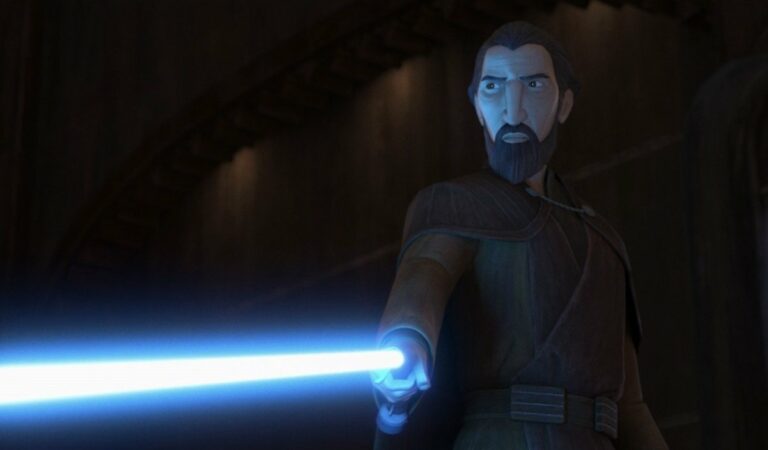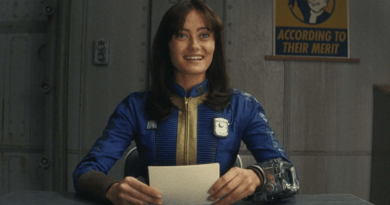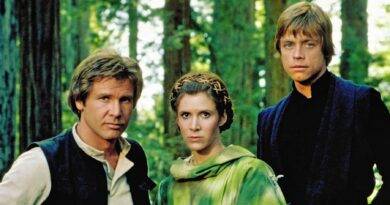
Tales of the Jedi Review
By Kieran Burt.
Tales of the Jedi is the newest animated project from Dave Filoni and Lucasfilm Animation, and, as someone who loves Star Wars: The Clone Wars, it’s great to return to the prequel time period, giving more depth to characters who sometimes get sidelined.
The six episodes are split equally between Dooku and Ahsoka. Ahsoka’s spans across when she was a baby, to her time in the clone wars, and finally one set after Order 66. Dooku’s episodes are slightly harder to pinpoint timeline wise, but the last one takes place during The Phantom Menace.
Dooku’s episodes are slightly stronger than Ahsoka’s, if only because Ahsoka is so heavily focused on Star Wars. It quickly gets to the heart of why Dooku left the order, wherever he goes in the Republic he sees corruption, corruption that the Jedi are blind and naive to.
Qui Gon Jinn thinks that just because a Senator has been in power for years means that he’ll do good by his people, and Mace Windu can’t see that the Jedi are simply a tool for maintaining the power and wishes of the Senate, even when those wishes are corrupt.
It’s little wrinkles like these that add nuance and more complexity to the Republic and Jedi Order, showing that they aren’t as perfect as they’re made out to be. This gives Dooku reasonable motivation to lose faith in the Jedi Order, and for Palpatine to exploit.
The third episode surrounding Count Dooku is the one that adds the most to his character. He is seen to have noble qualities, praising Qui Gon for his achievements and mourning him when he’s gone.
Dooku is vulnerable, and does have a darker side to him. It also proves that not all the Jedi are rigid in their ways, when Yaddle catches Dooku with Darth Sidious, she sympathizes with his fears, and promises him that he can repent if he helps her now.
The symbolism in this episode is also at its strongest here, with Yaddle representing Dooku’s lighter side and Palpatine representing the dark side. Dooku kills the light by killing Yaddle.
Ahsoka’s episodes are more aligned with Star Wars: The Clone Wars and Star Wars: Rebels but are nonetheless enjoyable. The first teaches the value of empathy, and Ahsoka’s cooing and crying was cute.
The second focuses on Ahsoka’s training, and it works well as an explainer as to why Ahsoka was able to last as long as she did during Order 66. Jesse gets a funny moment, apologizing for tagging Ahsoka with a stun blast. The final episode is essentially a quick summary of the Ahsoka novel, but shows that there are those under Empire who do think it’s a good thing.
Tales of the Jedi’s voice cast is absolutely full of talent, with many returning from The Clone Wars. Clancy Brown is a stand out as the latest Inquisitor, with his deep voice instantly adding to the fear.
The whole design of the Inquisitor is amazing, with a plague doctor-esque mask, a narrow hood and a flowing black cloak with the Imperial Cog in wihite, this design screams fear and oppression. The way he drags his lightsaber across the ground, like he doesn’t even care to lift it.
There are three newcomers (of sorts) to the voice crew. Liam Neeson returns as the voice of old Qui Gon Jinn, and his son Micheál Richardson plays his younger self, making for a great fit. Bryce Dallas Howard is a perfect fit for Yaddle, she is kind and compassionate, and her Star Wars fandom is well documented.
Kevin Kiner plays it safe with the music, but episode four is a particular highlight. At the end, Kiner uses drums to ratchet up the drama and tragedy. The Inquisitor’s theme is another stand out with its blaring horns.
Tales of the Jedi provides an extra window in which to view fan favorite characters with, whilst retaining the strong music, animation and voice cast it’s known for. While a strong focus on the known is a little disappointing, fans of prior animated shows will love this. If Lucasfilm does a season two, getting away from the known would work to its favor. A Revan anthology anyone?



